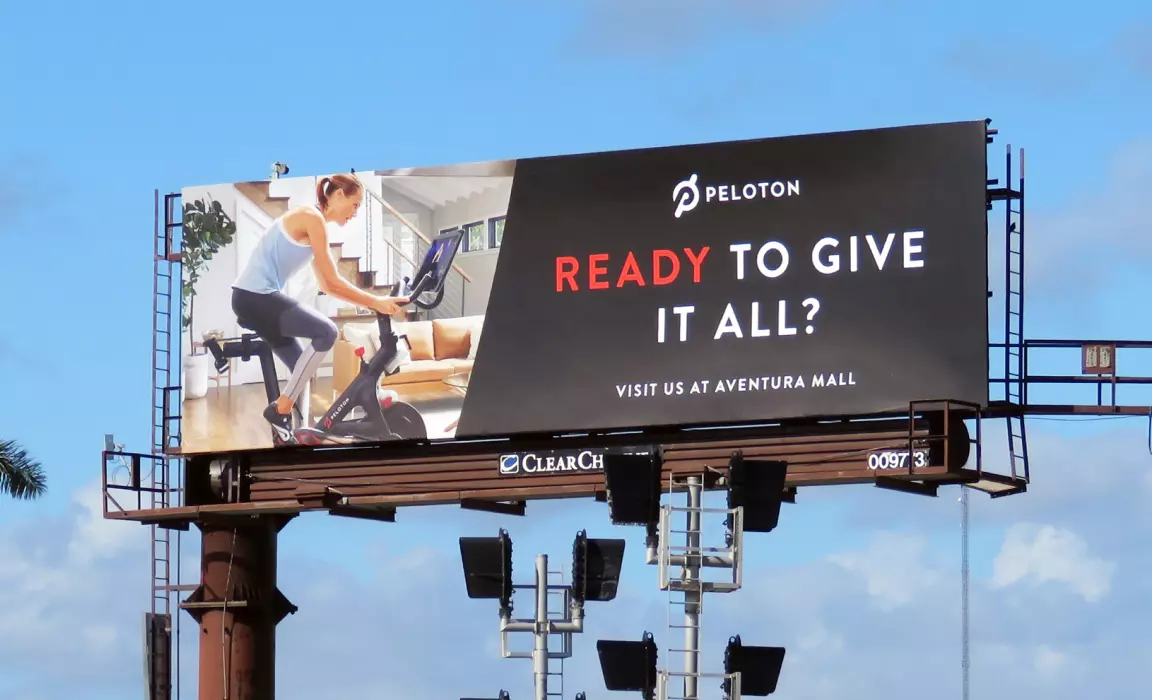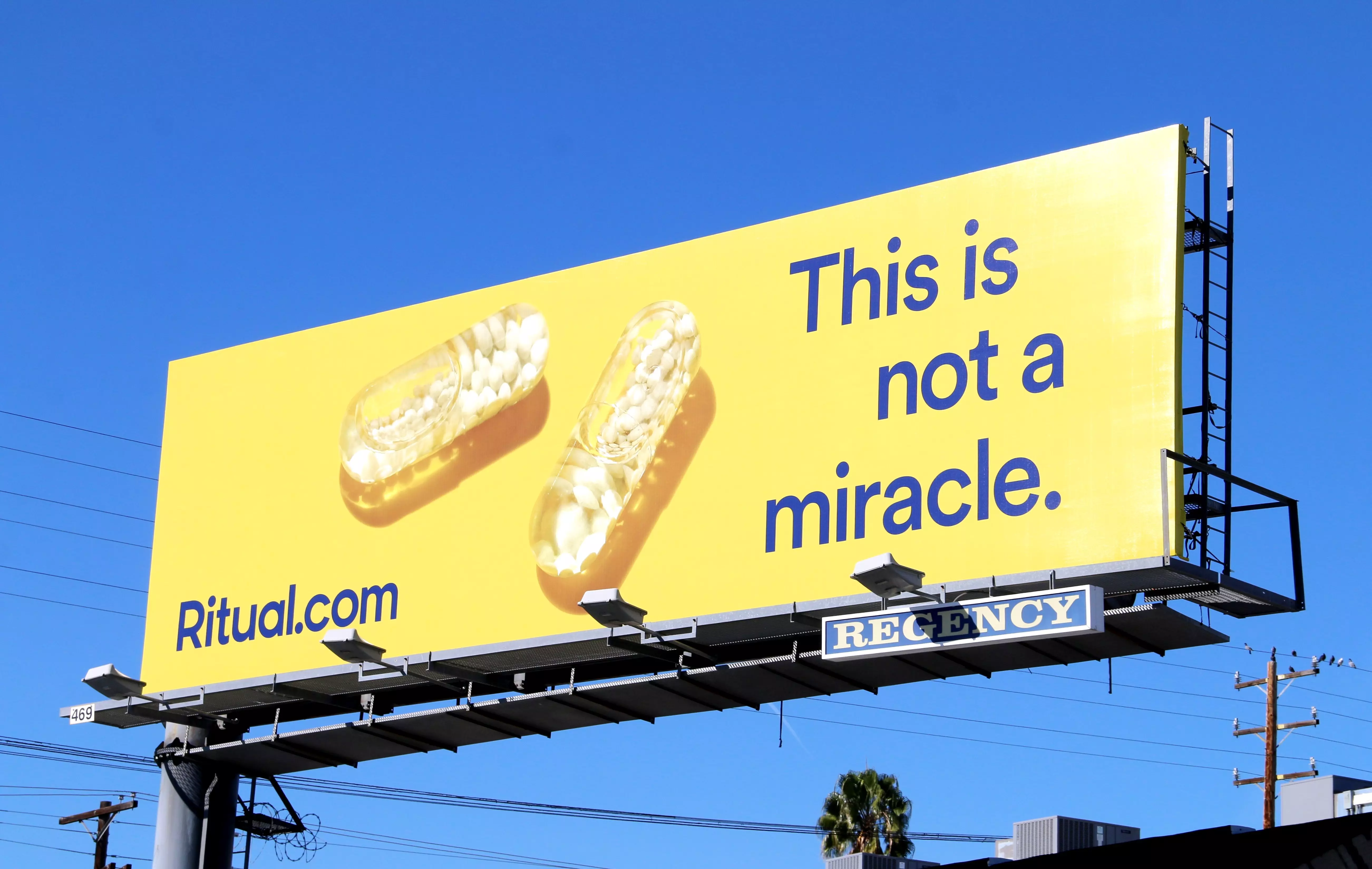We’ve all been there: you’re sitting in bumper-to-bumper traffic and your mind starts to wander. Your eye catches a flashy billboard on the side of the road. Maybe it makes you laugh, or maybe it piques your interest in an upcoming event or product.
A smart advertising company chooses billboard locations for optimal viewing: not only will the right location have a lot of traffic, it will also connect your brand with the demographics most likely to take interest in your product or campaign. Billboard advertising isn’t new, in fact, outdoor advertising remains one of the most established marketing strategies.
What Is Billboard Advertising?
If you’ve ever left your home you’ve probably come into contact with a billboard. Billboards are large-scale form of advertising that market a specific brand or marketing campaign, and are usually placed in high-traffic areas. Billboard placement and design run the gamut: they might be in a city center or along a rural highway; some digital billboards are interactive, and some are 3-D.
Categorized as out-of-home advertising (OOH), billboards are among the most common forms of outdoor advertising. By strategically using OOH, an advertising company can increase brand awareness by targeting commuters and foot traffic.
Printed Billboard Types
How Much Does Billboard Advertising Cost?
Billboards are a relatively inexpensive form of advertising. While the cost of your billboard campaign will depend on several key factors, including location, length of time, and design, billboards have a high return-on-investment due to the sheer volume of viewers.
Although OOH advertising is one of the most cost-effective forms of marketing, renting billboard space can quickly run into the six-figures if you choose a prime location. If you’re determined to rent billboard space in a high-volume area, you may be able to cut costs by keeping your design simple or creating the design in-house.
Billboard Design
Make Your Design Interactive
Once you’ve narrowed down your ideal location, you’ll want to make sure your billboard design appeals to your target audience and the greatest number of people.
By making your design interactive you’ll be more likely to capture the attention of your viewers. Consider the location and placement of the billboard, and see if there is a way your design can respond to its surroundings. If it's alongside a Los Angeles freeway, perhaps the content reflects on the ubiquity of traffic in LA. If it’s located in a neighborhood with lots of Victorian architecture, the content might include a historical reference. Be creative!
Tell A Story with Your Design
People respond best to information that comes in the form of a story. When you design your OOH ad, think of the story that you want to tell. Use images and minimal text to convey an idea. As with the best writing, an effective billboard will show rather than tell. Don’t burden your viewers with too many words; rely on images to tell a story about your brand or product. And don’t be too obscure: your target audience should be able to quickly understand any references.
Make Your Design Memorable
Remember that your viewers will only rest their eyes on your billboard for a couple of seconds at the most. The design has to be clean, to the point, and eye-catching. If you try to cram too many visuals into your design people won’t bother trying to unpack it all. Use big, bold fonts and simple images with contrasting colors.
How To Get Your Billboard Designed
When designing your billboard you have the option to create your design in-house or partner with a design company. In general, creating your design in-house will be more affordable, but your design capabilities will be more limited. A professional design company will have more insight into the latest trends and techniques, but their design costs can run upwards of $1k. Consider your priorities and internal bandwidth when making the decision.
Billboard Locations
One of the benefits of outdoor advertising is that thousands of commuters will see your content. Choosing the right location for your design is a critical component of your OOH marketing campaign, so look closely at your target demographics and consider where they’re most likely to see your content. Remember that an audience in San Francisco may not relate to the same content as an audience in more rural areas, for example.
How To Choose Your Billboard Location
Depending on your unique marketing campaign, you may not want to choose the most high-traffic areas. Your product may target a specific demographic that doesn’t necessarily frequent commercial city centers, for example. Billboard locations vary widely from state to state, so conduct thorough market research before landing on a location. And keep in mind that some states have laws governing billboard location and design. Vermont, for example, doesn’t permit billboards anywhere in the state.
Billboard Advertising Statistics
If you want to get started with your billboard advertising campaign, begin your research ASAP. Here are some handy statistics to get you started:
-
There are likely over 2 million billboards in the United States today.
-
About 80% of consumers said they noticed a billboard ad in 2019.
-
Over 50% of people said they’ve been highly engaged by a billboard in the last month.
-
At least 71% of people consciously look at billboards when driving.
Pros and Cons of Billboard Advertising
PRO - Billboards provide a wide reach. While some forms of targeted advertising can become overly niche, billboards cast a wide net and capture the attention of everyone passing by. No potential customers are left out when you employ a billboard advertising campaign.
CON - Some billboards, especially digital billboards and those with 3-D elements, can be costly to design.
PRO - Billboard ads are almost always placed to receive maximum exposure. That means there are few visual impediments, like buildings or trees, to block your design.
CON - Not all billboard locations are created equal. The best designed billboard campaign can easily languish in a sub-optimal location if you don’t conduct proper research.
What are the Advantages of Billboard Advertising?
Billboards provide a wide reach. While some forms of targeted advertising can become overly niche, billboards cast a wide net and capture the attention of everyone passing by. No potential customers are left out when you employ a billboard advertising campaign.
Other compelling reasons why billboards are great advertising strategy are: 1) Billboards are big and eye-catching 2) Billboards occupy a significant amount of space 3) Billboards can be catchy 4) Good billboards help reach the target audience 5) Today's technology makes it easy to target demographics 6) You can develop a demographic breakdown 7) You can place billboards where your target audience sees them 8) Billboards are a powerful tool to market your business 9) Billboards are a great way to advertise 10) Billboards are an effective marketing strategy 11) Billboards are a cost-effective advertising strategy 12) Billboards are a cheap way to advertise 13) Billboards are a quick way to advertise 14) Billboards are a creative way to advertise 15) Billboards can be used as a form....Impulse buying is very common among people who watch television shows or movies. People often buy things without thinking about it. A billboard can be used as a tool to encourage people to make immediate purchases. When you're on a roadtrip with your friends, and you see a billboard with tempting pizza, it will make your stomach growl and you'll want to stop and eat, even though you didn't plan to do so.Billboards are extremely effective advertising tools. They ensure brand exposure and brand recall. People who see billboards every day will recognize your logo or slogan. Your business name is remembered even after years. Billboards are effective because they reach people of all ages. They also provide a high return on investment. Radio ads and newspaper ads take more money but yield less returns.
What Are the Disadvantages of Billboard Advertising?
Billboards can be expensive. There are many factors to consider when choosing a billboard company. You need to know how much money you want to spend and what kind of return you expect. Your budget should include the cost of materials, labor, and other fees. You also need to pay attention to weather conditions, because billboards are usually made out of wood or metal. In addition, if the billboard is damaged by wind, rain, or snow, you could be liable for any damage caused by the billboard.
A billboard is a medium used by companies to advertise their products. Like other advertising media, such as television, radio, newspapers, etc., it provides a limited amount of information about the product. However, unlike these other media, it allows for a brief, if not fleeting exposure period. This means that viewers cannot easily remember the company name, address, phone number, etc. A billboard ad is a stationary mode of advertising. It doesn't depend on people visiting the place. It focuses on mass marketing, and it can't be personalized. Most importantly, it can't deliver personalized messages that are more effective than those delivered by social media or mobile apps.
Who Should Use Billboard Advertising
Billboards are especially effective for brands and products that appeal to a wide swath of consumers. Since they receive wide exposure, billboards are less likely to appeal to companies who target a very specific subset of the population.
Billboard ads are here to stay, so don’t neglect this critical advertising opportunity.



